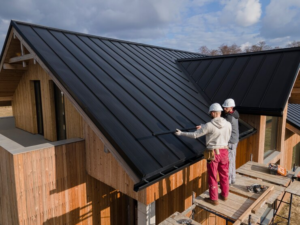People’s Circumstances Are Changing Due to Greater Inclusion
Regardless of the fact that most people today use the term “disability” to define an individual who has lower or no skills (in eyesight, speech, IQ, etc.) and that it is a far more acceptable phrase than “handicapped,” “disability” will be placed to the same category as “handicapped.” Over the last two decades, plenty of improvement has been made in the field of digital accessibility.
For example, as more people become aware of the challenges that individuals experience and the need for digital fairness, the status of what it means to be disabled rises. Despite the fact that most people are uninformed of what digital accessibility comprises, business executives, government officials, and legal experts are becoming increasingly conscious of the need to support persons who need assistive technology in making reasonable and meaningful use of technology.
As technology becomes more widely accessible and digitization makes it easier for everyone to use, the divide between impaired and non-disabled persons is closing. Even though we are not yet at a place where we can say that specialized technology has solved all of the issues that a person with a disability may face, it has made dealing with life’s obstacles significantly easier. Although some people believe that science and technology will someday eliminate all or the vast majority of illnesses, they acknowledge that this day is still many years away.
Having your website reviewed, however, allows you to get a jump start on accommodating visitors with these constraints right now. QualityLogic may send staff members to your site to seek ways to improve the pages. Whether it’s better colors, easier-to-read text, or additional music and images, you’ll see an immediate rise in visits.
Problems From the Past
Consider how a blind person interacted, traveled, and shopped in the mid-twentieth century to see how far technology has advanced in the previous 50 years. Telecommunications, typewriters, and Braille materials were not as readily available.
We required more access to books, magazines, and newspapers since they were mailed to us by blind-specific libraries. The prescription bottle and soup cans’ labels were obscured, and the buildings lacked Braille signage. What was on television could be heard but not seen.
It Took a Lot of Work to Get Around
Taxis were excessively costly if they were available in your region unless you lived in a major city with public transit. Passengers’ ability to travel by rail or airline was still being evaluated. There has to be something that could assist us in navigating or discovering ourselves. It wasn’t easy to navigate large indoor events, needing the use of orientation services or government support.
Personal Purchases
Even if you had a job and could get around on your own, you need things and amenities from your employer or the firm’s owner. This assistance was only given in exceptional circumstances. Some people can go shopping by themselves, albeit it may be a stressful experience.
A Positive Transition
In the previous 50 years, technology has gone a long way! The following examples demonstrate what good, accessible technology and a slew of inventive ideas have done for us 50 years later, supporting our autonomy and moving us up the equality ladder in a variety of ways.
Communication-Enhancing Technology
Zoom allows us to collaborate on various platforms, from mobile phones to PC workstations. We create reports utilizing word processors, email, and text messaging from anywhere with a Wi-Fi or mobile signal. We have the ability to read almost any magazine, book, or newspaper that piques our curiosity. Prescription bottles are now commonly accessible, as are canned, boxed, and packaged meals.
Excellent assistive technologies, like screen readers, magnifiers, automatic captioning systems, and instantly available digital information, have made this possible. Because of the emergence of descriptive video services (DVS), we may now view a variety of television shows. Most buildings are required by the Americans with Disabilities Act (ADA) to provide Braille markings on room signage and elevator controls.
It’s Simple to Plan a Trip
Many parts of the world now consider rail and aircraft travel to be safe, and smartphone ridesharing makes it simple to get around cities. GPS has expanded our options while also making walking and driving easier to do. Augmented reality apps like AIRA and Be My Eyes broadcast live assistance from sighted people to our mobile devices, allowing us to traverse unfamiliar areas like enormous skyscrapers easily.
Shopping Over the Internet Has Become Commonplace
The capacity to have practically anything delivered right to one’s door in the preceding five years has made it substantially simpler to obtain what one wants. Online shopping has not only allowed us to have stuff shipped to us, but it has also given us access to products and services that we would not have known about if we had shopped in a store. Despite the COVID-19 outbreak, supermarket deliveries will continue.
Although things have improved, they are still far from perfect. Accessibility still requires significant work to enhance and become the standard (expectation). Because they lack vital characteristics that allow them to be used, PDFs and online forms are frequently inaccessible to people with disabilities. We could make travel simpler if we had more choice in where we went, but purchasing on many e-commerce sites still needs to be improved. However, life today is far superior to life even twenty years ago.
By making their websites more digitally accessible, QualityLogic and other software suppliers have helped businesses get on the right road. Businesses with a well-educated workforce may develop game plans and designs for their software that everyone can utilize.
Accessibility Improved Because of Technological Advancements
Technology advancements have benefited us in performing mundane chores that most people take for granted. Although technology has enabled significant progress, most of it has also been created to make most people’s lives easier. According to the adage, “One person’s convenience is another person’s accessibility.” Many individuals benefit from food delivery, but it is especially important for those who are unable to drive or navigate a grocery store due to vision impairment.
As technology advances, the divide between persons with disabilities and those who are not disabled will reduce even further. Because of 5G networks and ultra-fast AI and ML systems, wearable technology, for example, will be able to see, hear, and grasp what is going on around us. Despite the fact that certain digital data is still being researched, access to websites, multimedia, mobile apps, and traditional office paperwork is growing.
From the touch displays on our devices and fitness equipment to the climate controls in our houses, technology is permeating every part of our lives. We need unlimited access to a wide range of digital material to fulfill our aim of full inclusion.
Although technological advancement has improved the lives of millions of people, true digital equality remains a long way off. Regardless of your viewpoint, digital access is here to stay. Accept it and seek to change it via education, training, and collaboration. One day, it will not be considered a tool for making our lives easier and more joyful. Avoid specialized skill sets. It will be used as a model for successful digital marketing.
Improve the Usability of Your Website
Contact QualityLogic if you own a company and want to make your website more digitally accessible. We think that everyone, regardless of health or disability, has the right to access. We will work with you to educate and devise a strategy to allow everyone to view your website.
We also employ Wi-SUN test tools to help firms in the smart energy industry create items that run on wireless intelligent utility networks. This testing entails determining hardware and software compatibility and functionality to guarantee that anyone utilizing the devices can deliver dependable solutions and excellent customer service.
To read more about the sectors and services we serve, please visit the QualityLogic website or talk to us right now. We pledge to offer cutting-edge work and prioritize you at all times, regardless of the sort of software solution you require from us.





